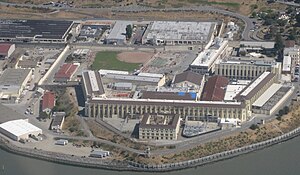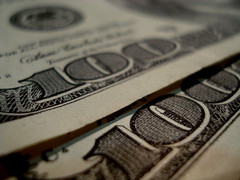- RT @bargainr: Life in North Korea is absolutely dreadful http://nyti.ms/dAcL26 #
- RT @bitfs: Weekly Favorites and Gratitude!: My Favorite Posts this Week Jeff at Deliver Away Debt threw together the .. http://bit.ly/9J0gGo #
- @LiveRealNow is giving away a copy of Delivering Happiness(@dhbook). Follow and RT to enter. http://bit.ly/czd31X # #
- Baseless claims, biased assumptions, poor understanding of history. Don't bother. #AnimalSpirits #KeynesianCult #
- RT @zappos: Super exciting! "Delivering Happiness" hit #1 on NY Times Bestseller list! Thanks everyone! Details: http://bit.ly/96vEfF #
- @ericabiz Funny, we found a kitten in a box last week. Unfortunately, it was abandoned there, not playing. Now, we have a 5th cat. in reply to ericabiz #
The High Cost of Keeping Richard Ramirez in Prison

Serial killers in the United States often gain cult status due to their strange courtroom antics and dramatic personalities. Recently deceased death row inmate Richard Ramirez was definitely one of the most famous serial killers of all time before he passed away of liver failure in California’s San Quentin State Prison.
After a dramatic arrest in 1985 in East Los Angeles by residents who recognized Ramirez from photographs displayed all over the news, Ramirez would sit in jail for years while awaiting a trial that finally began in 1989. There would be no more expensive trial in the history of Los Angeles County except for the O.J. Simpson trial that occurred a few years later.
At a cost of $1.8 million dollars, Los Angelinos would pay dearly for the privilege of trying Ramirez in a court of law. Incredibly, however, this massive sum wasn’t the only cost associated with this vicious serial killer. Because he was sentenced to death and due to the incredibly long appeals process associated with death row inmates, Ramirez sat in jail for over two decades without any fear of actually being put to death by the state of California.
Over the past hundred years, the number of individuals incarcerated in the United States has ballooned from a few hundred thousand people to almost 2.5 million prisoners. The most expensive people to incarcerate are death row inmates, who sit in a type of solitary confinement for decades. A moratorium on future executions in California has ensured that inmates like Ramirez have been costing taxpayers millions of dollars for housing and appeals with no likelihood of being put to death.
According to the American Civil Liberties Union, there are around 700 people sitting on death row in California, which require a massive investment of tax dollars. The state’s ongoing budget crisis and inability to balance its budget has put great strain on the prison system to house so many death row inmates at such an incredible cost.
Richard Ramirez’s untimely death at the age of 53 and his decades-long residency within a state prison brings to light a disturbing fact: more inmates die of natural causes while on death row than are actually put to death. Whether support for the death penalty exists or not, the billions of dollars spent by the state to keep inmates on death row has resulted in just 13 executions since the late 1970s.
A study in 2011 that was conducted by a judge and professor in the state suggested that California has spent over $4 billion since the death penalty was reinstituted. Out of those funds spent, at least a billion dollars was used for housing and incarceration of the inmates, including serial killers like Richard Ramirez.
A further study presented by the Commission on the Fair Administration of Justice in 2008 suggested that keeping the system intact with inmates on death row would cost around $137 million dollars a year. On the other hand, if California was to commute those death sentences to life in prison and abolish the death penalty, the yearly cost would drop to $11.5 million a year.
Offering the families of victims of death penalty-worthy crimes the chance to see a killer or other criminal experience the ultimate punishment may offer some sort of closure. Unfortunately, with the expectation that individuals on death row are more likely to die of natural causes than be put to death in California, the implementation of the death penalty in the state must be reexamined.
Related articles
Huh?
Am I the only one who just noticed that it’s Wednesday? The holiday week with the free day is completely screwing me up.
Just to make this a relevant post:
Spend less!
Save more!
Invest!
Wee!
Does a Gay Marriage Cost more than a straight marriage?
The costs of a wedding will depend on what state you live in. For gay couples this is even more important as only a few states allow gay marriage. These states are California, Connecticut, Delaware, Iowa, Maine, Maryland,

Massachusetts, Minnesota, New Hampshire, New York, Rhode Island, Vermont, and Washington D.C.
Related articles
Garage & Yard Sale Manual

After months of research and planning I recently had a successful garage. Here’s my how-to yard sale manual.
Step 1: Preparation. You can never be too prepared. I detail advertising, setup, planning and more.
Step 1.5: Marketing. Here is the text of the ads I placed.
Step 2: Management. Pricing, haggling, staffing, and other “Day Of” issues.
Step 3: Wrap-up. It’s done. What now?
Finally, we’ve got a Page of Tips. This is sure to grow over time.
New 100 Dollar Bill – What Changed?
The new $100 dollar bill was introduced to the world recently and Benjamin Franklin, the iconic figure who has traditionally graced the C note for decades, would, as a garish and innovative guy himself, completely approve.
The Federal Reserve added many clever designs to thwart counterfeiters. First of all, there’s lot more color. The older designs that were all variations of green, black and gray have been glammed up with oranges, copper and blues, all with the purpose of adding extra security.
A blue ribbon that runs vertically through the bill is actually hundreds of thousands of little liberty bells that change shape as the bill is turned different angles. So if you’re in the habit of giving crisp Benjamins to family members, you might want to show them how the bells change into “100s” right before their eyes. Cool, huh?
Is that a feather? No, it’s a quill. Not just any quill, it is put there, in a lovely shade of copper, to represent the signing of the Declaration of Independence. Phrases from that document are on the bill too, in tiny letters, so readers can get a micro-lesson in American history (and counterfeiters groan in frustration!)
If that weren’t enough, and it isn’t if you’re trying to one-up the bad guys, a colored ink well has another liberty bell in it. This bell changes from green to copper as the perspective on it changes, just like the 100 that’s next to it.
New textures along Franklin’s shoulder are also more than just a delight for the senses, they could also challenge any counterfeiter. Raised textures are all over the bill and makes holding a C note more fun than ever. With over three billion of these Benjamins in circulation, the government has no choice but to take every measure to protect its currency.
Franklin also makes an appearance in a watermark. If you hold it up to the light, you can see him again. What would he think of all these changes?
If you turn the bill over, besides seeing a bold 100 in bright gold/orange numbers, you’ll also see Independence Hall in Philadelphia, from the back. The back? Why would the Federal Reserve want a photo of this historic landmark where they keep the lawn mower and recycling bins? (Thankfully, they’re not in the picture.) Again, this is for the counterfeiters’ benefit. If you’re going to go to all the trouble of counterfeiting, now you’ll have to get Colonial architecture accurate. (Counterfeiting is a felony and can earn you some serious jail time. It’s not worth it, kids!)
The new $100 bill is a work of art, a technological achievement and a tribute to our great nation, and more specifically, a prominent figure in our history. Benjamin Franklin, inventor, printer, signer of the Declaration of Independence and Philadelphia’s most famous kite flyer, would probably be thrilled with the technological upgrades, the bling and all those Liberty Bells on the new $100 bill.









